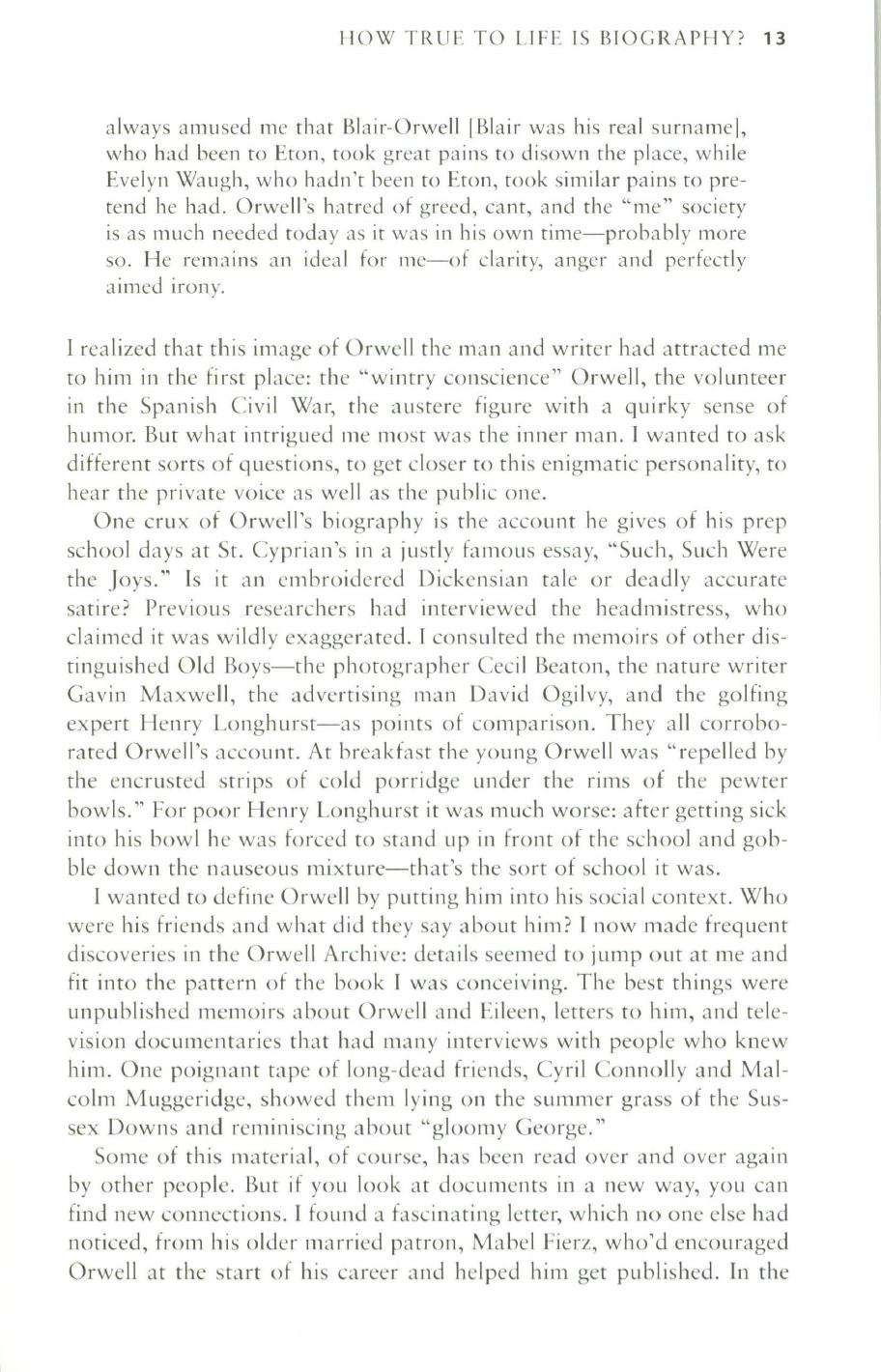
IIOW TRUE TO LIFE IS BIOGRAPHY? 13
always amused me that Blair-Orwell IBlair was his real surnamel,
who had been to fron, took great pains ro disown the place, while
Evelyn Waugh, who hadn't been to Eton, took similar pains
to
pre–
tend he had. Orwell's hatred of greed, cant, and the "me" society
is as much needed today as it was in his own time-proba bly more
so. He remains an ideal for me-of clarity, anger and perfectly
aimed irony.
I realized that this image of Orwell the man and writer had attracted me
to him in the first place: the "wintry conscience" Orwell, the volunteer
in the Spanish Civil War, the austere figure with a quirky sense of
humor. But what intrigued me most was the inner man. I wanted to ask
different sorts of questions, to get closer to this enigmatic personality, to
hear the private voice as well as the public one.
One crux of Orwell's biography is the account he gives of his prep
school days at St. Cyprian's in a justly famous essay, "Such, Such Were
the Joys." Is it an embroidered Dickensian tale or deadly accurate
satire? Previous researchers had interviewed the headmistress, who
claimed it was wildly exaggerated. I consulted the memoirs of other dis–
tinguished Old Boys-the photographer Cecil Beaton, the nature writer
Gavin Maxwell, the advertising man David Ogilvy, and the golfing
expert Henry Longhurst-as points of comparison. They all corrobo–
rated Orwell's account. At breakfast the young Orwell was "repelled by
the encrusted strips of cold porridge under the rims of the pewter
bowls." For poor Henry Longhurst it was much worse: after getting sick
into his bowl he was forced to stand up in front of the school and gob–
ble down the nauseous mixture-that's the sort of school it was.
I wanted to define Orwell by putting him into his social context. Who
were his friends and what did they say about him? I now made frequent
discoveries in the Orwell Archive: details seemed to jump out at me and
fit into the pattern of the book I was conceiving. The best things were
unpublished memoirs about Orwell and Eileen, letters to him, and tele–
vision documentaries that had many interviews with people who knew
him. One poignant tape of long-dead friends, Cyril Connolly and Mal–
colm Muggeridge, showed them lying on the summer grass of the Sus–
sex Downs and reminiscing about "gloomy George."
Some of this material, of course, has been read over and over again
by other people. But if you look at documents in a new way, you can
find new connections. I found a fascinating letter, which no one else had
noticed, from his older married patron, Mabel Fierz, who'd encouraged
Orwell at the start of his career and helped him get published. In the


